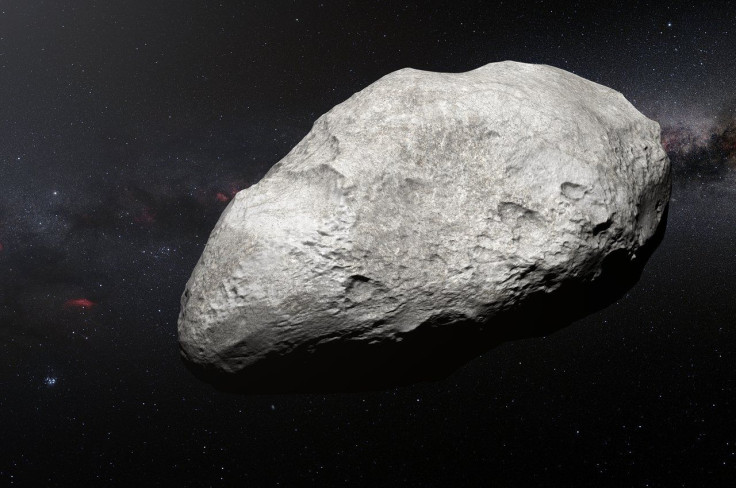Exiled Asteroid: Ancient Space Rock Ejected From Inner Solar System Discovered

Astronomers using European Southern Observatory (ESO) telescopes have discovered an ancient asteroid, one that formed billions of years ago and was ejected into the farther, icy reaches of our solar system.
Dubbed 2004 EW95, the carbon-rich object came to be during the chaotic formation of our stellar neighborhood. It originally existed in the asteroid belt between Mars and Jupiter, but now sits beyond Neptune in a disc-shaped region called the Kuiper belt, about four billion kilometers away from Earth.
So, what really happened? How did the 291-kilometer-wide asteroid get exiled from its original home and traveled all the way past Neptune?
The answer to the question also goes back to the origins of our solar system. As per theoretical models, billions of years ago, when rocky planets and gas-giants like Jupiter and Saturn formed, they rampaged through the solar system, moving closer and farther from the sun.
It is believed the gravitational pull of these planets disturbed some quiet space objects sitting in the inner solar system and sent them all the way outward in orbits at greater distances from the sun.
As asteroids usually contain material available in the region of their formation, the theory, popularly dubbed as the Grand Tack Hypothesis, meant some of the asteroids present in the colder regions beyond Neptune should be rich in carbon, iron, and silicon, just like rocky bodies formed closer to the sun.
However, despite detecting several space objects in the Kuiper Belt, the theory wasn’t proven until the carbon-rich chunk 2004 EW95 was observed and analyzed. The asteroid first came to notice during routine observations from Hubble Space Telescope and the way it reflected ultraviolet light was completely different from other bodies in the group.
“The reflectance spectrum of 2004 EW95 was clearly distinct from the other observed outer Solar System objects,” lead author Tom Seccull said in a statement. “It looked enough of a weirdo for us to take a closer look.”
That said, the group turned towards the Very Large Telescope in Chile and took more detailed measurements of the light the rock reflected. Though observing a dark space rock sitting billions of kilometers away is a scientific challenge in itself, the spectrographs of the telescope helped the team determine the composition of the rock and confirm it’s an exiled member of the inner solar system.
“Not only is 2004 EW95 moving, it’s also very faint,” Seccull added. “We had to use a pretty advanced data processing technique to get as much out of the data as possible.”
“While there have been previous reports of other ‘atypical’ Kuiper Belt Object spectra, none were confirmed to this level of quality,” Olivier Hainaut, an ESO astronomer who was not part of the team, said in the statement. “The discovery of a carbonaceous asteroid in the Kuiper Belt is a key verification of one of the fundamental predictions of dynamical models of the early Solar System.”
The study, titled “2004 EW95: A Phyllosilicate-bearing Carbonaceous Asteroid in the Kuiper Belt,” was published in The Astrophysical Journal Letters.
© Copyright IBTimes 2024. All rights reserved.





















